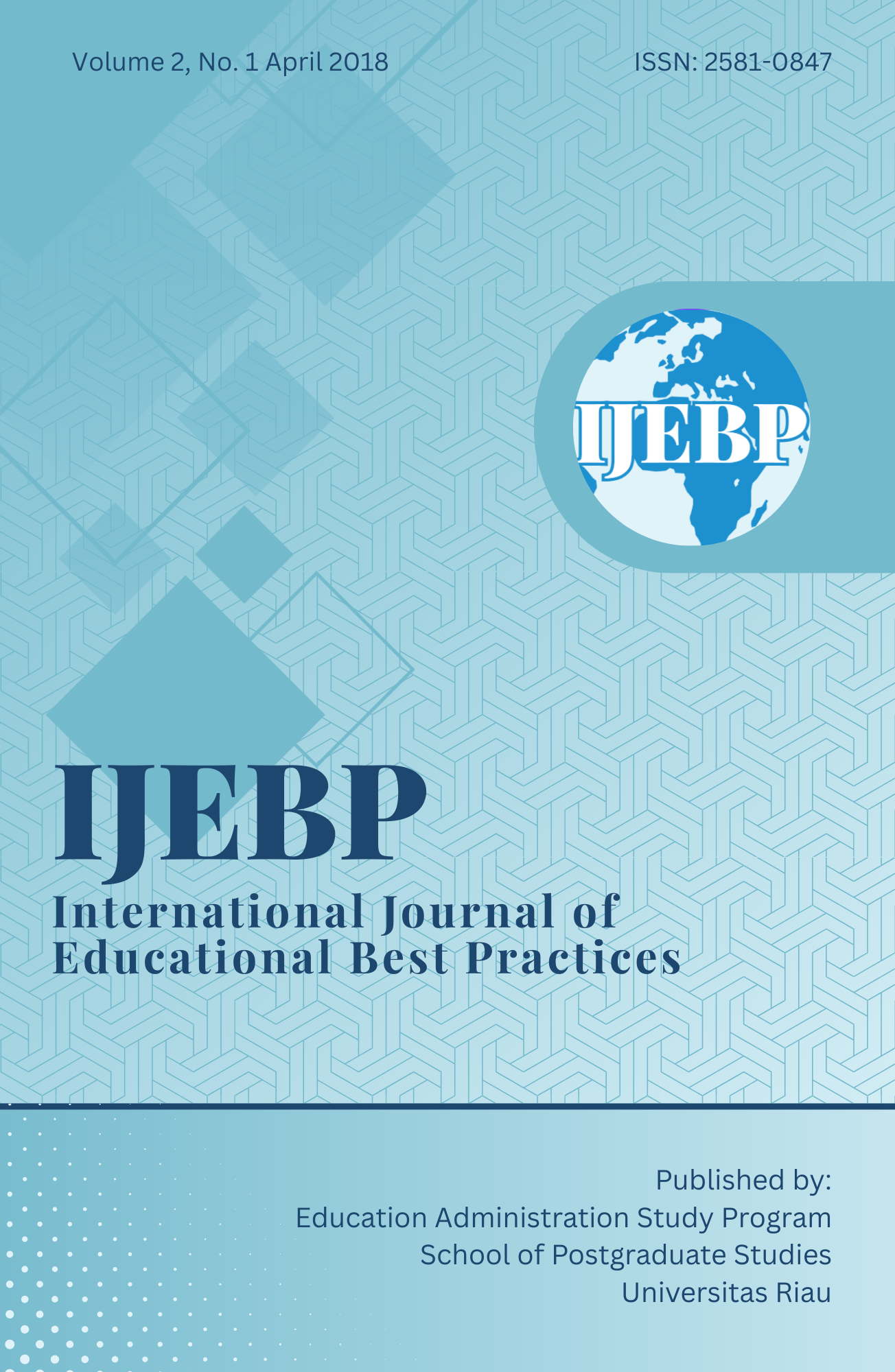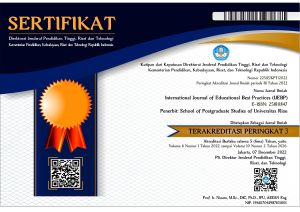TEACHERS’ STRATEGY OF POSITIONING IN TEACHING YOUNG LEARNERS
DOI:
https://doi.org/10.31258/ijebp.2.1.1-13Keywords:
teacher's position, Teaching English to Young Learners (TEYL), young learners, classroom managementAbstract
Teacher’s position in the classroom depends on several aspects including the classroom s/he teaches in – whether s/he has the ability to move around – and the nature of the activities s/he is going to do in the class. As teacher's gestures including positioning and body posture bring the particular message to the students, the position whether a teacher should stand in front of the students, crouch down near them or sit with them on the floor needs to be considered when the teacher plans the lesson. This paper presents a discussion on how teachers of young learners position themselves in the classroom, the observed students’ behaviour during the lesson as the impacts of the positioning, and the teachers’ perspectives of the impacts of their positioning towards the students’ movement in the classroom. The study is done through observations towards an interview with two English teachers teaching classes of children of early years (4-5 years old), at a pre-school in Jakarta. It portrays a description of the teachers' position in the classroom and why they choose a particular position for a particular activity. The findings show that standing, sitting and kneeling in front of the students or among them is the most chosen position. Analysis on how students react to their lesson in relation to their position while teaching is also presented after a discussion on the reasons of teachers choosing their position in the classroom. As a final point, I elaborate the discussion on how teacher's positioning strategy can be implemented to help improving teacher's teaching practice. The presentation is envisioned for language teachers, language teaching researchers, teacher trainers, and those who are interested in the area of Teaching English to Young Learners (TEYL).
References
Bertrand, J. (2009). Managing young learners. Retrieved from https://www.teachingenglish.org.uk/article/managing-very-young-learners.
Bertrand, J. (2010). Maintaining concentration with young learners. Retrieved from http://www.teachingenglish.org.uk/article/maintaining-concentration-young-learners.
Braddock, P. (2014). Young learners: are you using the correct terms for your young learners? Teaching English, British Council, BBC. Retrieved from https://www.teachingenglish.org.uk/article/young-learner-terminology.
Brown, H. D. (2001).Principles of language learning and teaching. (4th ed.). New York: Pearson Education.
Creswell, J.W. (2009). Research design: qualitative, quantitative, and mixed methods approaches. Thousand Oaks: Sage Publications.
Griffiths, B. (2005). Teacher positioning in the classroom. Teaching English, British Council, BBC. Retreived from https://www.teachingenglish.org.uk/article/teacher-positioning-classroom.
Harmer, J. (2007).Teaching by principles: an interactive approach to language pedagogy. (2nd ed.). New York: Pearson Education.
Harper, D. (2002). Talking about pictures: a case of photo elicitation. Visual Studies, 17(1), 13-26.
Herdiansyah, H. (2013). Wawancara, observasi, dan focus groups sebagai instrumen penggalian data kualitatif. Jakarta: Rajawali Pers.
Kumar, R. (2014). Research methodology: a step-by-step guide for beginners. London: SAGE Publications Ltd.
Larsen, M. (2015). Your position in the classroom. People, Places, Things. http://www.pptpdx.com/china-chuangkou/classroom-management-iii-your-position-in-the-classroom/
Lichtman, M. (2006). Qualitative research in education: a user’s guide. London: Sage Publications.
Marsh, W., Shawe, J., Robinson, A., Leamon, J. (2016). Moving pictures: the inclusion of photo-elicitation into a narrative study of mothers’ and midwives’ experiences ofbabies removed at birth. Evidence Based Midwifery,14(2), 44-48.
Merriam, S.B. (2009). Qualitative research: a guide to design and implementation. California: Jossey-Bass.
Patton, M. Q. (2015). Qualitative research & evaluation methods. (4th ed.). California: SAGE Publications, Inc.
Sime, D. (2006). What do learners make of teachers’ gestures in the language classroom? IRAL, International Review of Applied Linguistics in Language Teaching, 44(2), 211-230.





